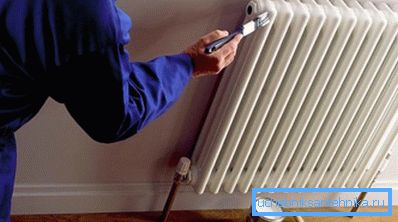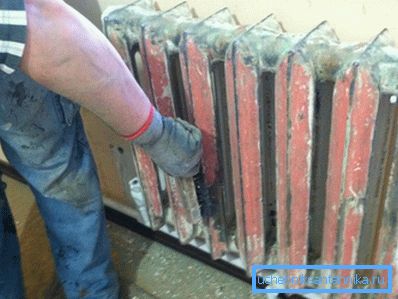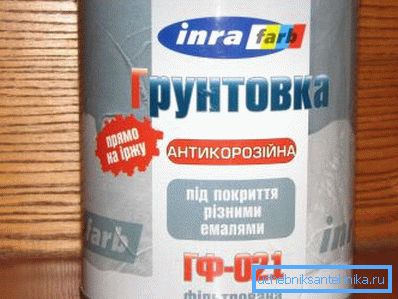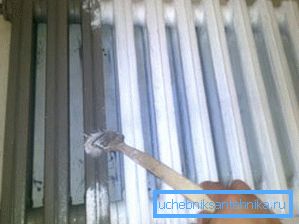Enamel for radiators: types of paints, technology of
Batteries in normal operation can work for more than a decade. Nothing will happen to the metal, but now the paint will fade with time, become covered with scratches, chipping is possible, as a result, the heater gets an unsightly appearance. Painting will give the battery a second youth.

Types of battery paints
The composition of paints does not change much, for radiators can be applied:
- alkyd paint - after drying, the film turns out to be very durable, so that you do not have to worry about the appearance of the radiator, when drying, an unpleasant smell is guaranteed, so work should be done outdoors or in a well-ventilated room;

Note! Sometimes an unpleasant smell can be felt when the battery is very hot.
- acrylic composition - an unpleasant smell is felt only at the stage of drying, during the operation of the radiator it will not be in spite of the high surface temperature;
- can be used and paint on a water dispersion basis. In this case, there will be almost no unpleasant smell.
Note! Oil paints should be avoided. The fact is that when heated, such coatings lose their strength, so that the durability of the coating will be minimal. Yes, and such a composition dries much longer than, for example, acrylic paint.
As for the color palette, all of the above types of paintwork materials do not have problems with this; you will have to choose from dozens and even hundreds of shades. So the battery can be painted even in white, even in emerald green color.

When choosing, attention should be paid to such parameters as:
- resistance to temperature - ideally, the composition should withstand heating up to 100? С. In reality, the surface temperature of the battery is lower, so there will be a margin;
- resistance to mechanical stress;
- it is desirable that the paint was as harmless as possible, after all the battery is in a residential area.
Work execution technology
The painting process itself is not particularly complicated, the preparatory work will take much more time. The durability of painting in many respects depends on the quality of their implementation, so you should not neglect the preparatory stage.
Preparing the battery for painting
The most time-consuming in preparing the radiator for painting with your own hands can be considered as cleaning the surface. It is necessary to completely remove the old paint, and if the battery is old, then the rust will have to be removed.
It is recommended to perform the preparation in the following sequence:
- In order to remove the old paint, the usual wash is best suited (a building dryer is not the best option). It is enough just to apply the remover with a brush on a painted surface and leave for 1.5 hours. In order that the solution does not evaporate, we wrap the battery with a film;

Note! The wash - an extremely “odorous” solution, so that the work is best carried out in fresh air.
- then we inspect the battery for rust, if it is present, we manually treat the damaged area with ordinary emery paper. The dull shine of the metal of the heating battery should be visible;

- after that, it is necessary to clean the surface from dust, particles of rust and metal, for degreasing it is recommended to use white spirit or any other similar solution. It is enough just to soak the cloth and carefully wipe all the surfaces of the radiator;
- For further work, you will need a primer for the metal. This liquid is applied in order to increase the adhesion of the paint to a smooth metal surface. It also acts as an additional anti-corrosion protection. Its price is low, so it is better not to risk and process the metal.
Note! In principle, any primer for metal with anti-corrosion properties will do. Not bad proven alkyd primer.

Go to painting
Of the tools you need: a convenient container for paint, foam roller and small narrow brushes. You can use paint in cans or use a spray gun, but the geometry of the heaters is such that you still have to paint in hard-to-reach places with a brush.
It will be much easier to paint if you first remove the radiator from the mounts. Otherwise, to get to the back of it will be almost impossible.
Painting instructions strictly prohibit starting work until the metal cools to room temperature. If you hurry and apply a layer of paint on a hot metal, then blistering on the surface is guaranteed, and if this did not happen, the adhesion of the layer of paint to the substrate will be minimal;
It is recommended to adhere to these rules when applying paint to the battery:
- start better with the most inaccessible places. Due to this, the hands do not get dirty due to contact with other parts of the radiator;

- It is desirable to paint in the direction of top-down, if the paint and drain (this often happens when using a brush), then it will not spoil the surface below;
- It is necessary to apply a layer of paint in 1 run, it is highly undesirable to paint first one part of the heater, then the second. Even using the same paint can cause a difference in shade;
- 2-layer paint is allowed.
Battery decoration
Sometimes monophonic batteries do not look at all in the room, in this case, you can “revive” them by applying a curious pattern to the surface.
There are several ways of decorating (decoupage) batteries:
- if you plan to turn the entire heating battery into an image, then it can be pasted over with rice paper. Then the image itself is applied to it. In this case, the preliminary painting of the heater is not needed;

- if the main color of the radiator remains, and it is planned only to apply several decorative elements, then paint (the same type used to paint the heater, but a different shade) is useful and a stencil. On the stencil, cuts are made along the contours of the pattern, then it is applied to the surface of the battery and rolled with a roller a couple of times;

- volumetric decoration can also be used, in which case a self-hardening plastic mass is used.
Conclusion
Painting the battery is a necessary measure, because during operation it inevitably loses its attractive appearance. Fortunately, this does not require any significant financial or time costs. If desired, you can combine the painting with the application of the pattern, as a result we get an interesting addition to the interior of the room and extend the life of the battery.
The video in this article shows the process of removing paint from the radiator.